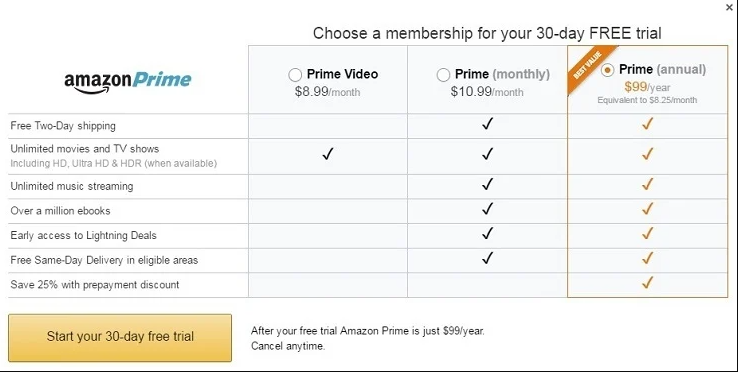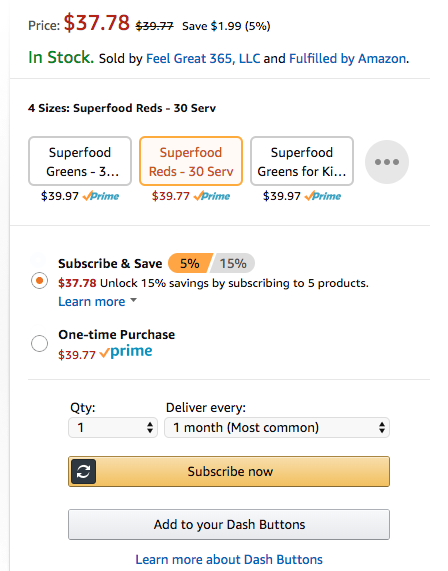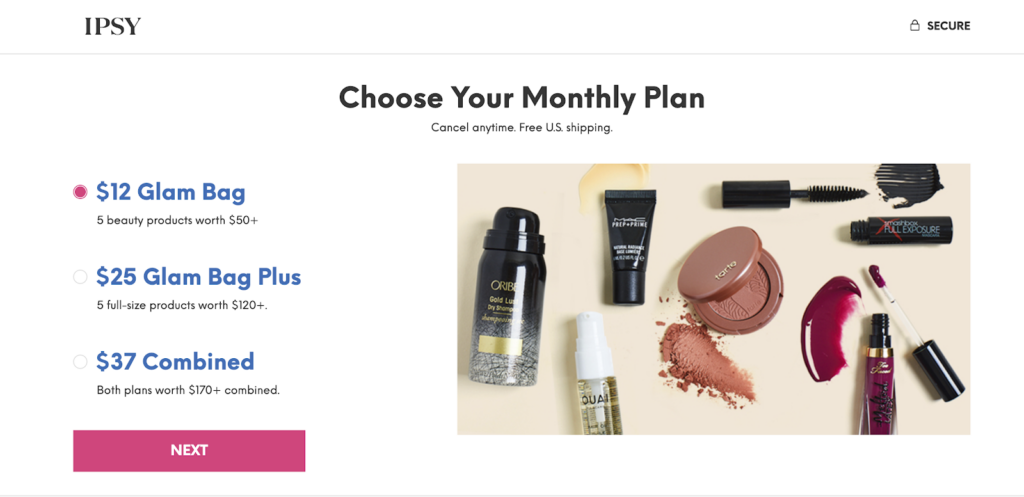The beauty of a subscription-based business model is that it offers recurring, predictable revenues, which can be a powerful driver of sustainable growth.
While traditional eCommerce platforms focus on helping you sell physical and digital products directly to consumers they may be unsuitable for selling subscriptions or memberships.
To successfully implement manage a subscription-based business we recommend working with an experienced billing platform that offers unique recurring payments capabilities not typically found in traditional eCommerce providers.
This article will show you the essential features of such a platform and how you can identify the best subscription eCommerce platform for the unique needs of your business.
TL;DR
- A subscription eCommerce platform is a software solution that allows an online store to charge its customers a recurring fee for continuous delivery of a product or service in pre-determined quantities.
- There are three popular retail subscription models, including access, replenishment, and curation, and the right model for your business will depend on the peculiarities of your industry or niche.
- Stax Bill is the leading subscription platform on the market. It has all the features you need to sell digital products as well as physical ones, and lets you easily set up a wide range of recurring billing models.
What is a Subscription eCommerce Platform?
A subscription eCommerce platform is a software solution that allows an online store to charge its customers a recurring fee for continuous delivery of a product or service in pre-determined quantities or a pre-determined time period.
The billing cycle can be weekly, monthly, or yearly, and your customers will continue to receive the product or service as long as you retain access to the means of online payment they provide upon registration and they have not cancelled the service
Your subscription platform will facilitate this recurring billing system and, ideally, let you implement other key functionality, such as product swaps, order skips, and returns.
The COVID-19 pandemic massively contributed to the explosive popularity of subscription-based shopping and the model appears to be here to stay.
It has become an expectation for all kinds of modern-day buyers across all customer segments, and the eCommerce subscription market is projected to be worth $904 billion by 2026.
How Does Subscription eCommerce Work?
The central tenet of subscription eCommerce is that it must ensure customers no longer have to manually reorder their favorite items when they need them.
The item is delivered to their doorsteps like clockwork in quantities and according to the schedule they specified when signing up for the subscription plan.
This approach is already well-established in the software/SaaS industry with companies like Netflix (movies), Adobe (design tools), and Microsoft (productivity tools) charging their users monthly subscription fees for access to their platforms.
In the eCommerce space, the subscription process begins when the shopper selects a subscription plan from a range of options.
Each plan comes with associated benefits, and the plans are typically organized into tiers, with the most expensive plans being the most feature-rich ones.
Next, the customer will provide payment information, which will be validated by the eCommerce store’s platform payment services provider to facilitate seamless recurring billing.
Once payment is processed successfully in each billing cycle, the products and services will be delivered to the customer.
Timely and efficient order fulfillment depends on frictionless and frequent customer engagement.
Communication tools like automated reminders help ensure funds are always available in the credit or debit card provided to pay for the ordered goods.
Types of Subscription Business Models
These days, you can successfully sell practically any product on your eCommerce platform using a subscription-based model and there are no binding rules.
Nevertheless, most eCommerce subscription business concepts fall under three main models,
- Access subscription business model
- Replenishment subscription business model
- Curation subscription business model
Access subscriptions
This model gives subscribers the normal recurring delivery of physical products expected in a typical subscription model plus exclusive access to enhanced services, information, privileges, and resources unavailable to non-subscribers.
The idea is that offering rare benefits will help build loyal customers.
These members-only benefits can include free shipping, special discounts, early access to new products, etc.
Amazon Prime is an excellent example. It offers subscribers perks like fast grocery delivery, free shipping, easy returns, seamless checkouts, and much more.

Walmart+ is of a similar mold in the eCommerce space.
Replenishment subscriptions
This model involves the regular delivery of essential consumer items to customers, helping them ensure they are always well-stocked with household necessities.
These are typically items we regularly use in our homes, such as cleaning supplies, cookies, pet supplies, OTC (over-the-counter) medication, groceries, and toiletries.
A good example is Amazon’s Subscribe & Save subscription plan, which lets subscribers pick from thousands of eligible products and set up recurring auto-delivery of those items to their address.

The main perk of this auto-replenishment plan is that customers receive a percentage off discount if they add five or more items to their recurring package. When the price of any item changes, an email will be sent before the upcoming delivery.
Curation subscriptions
This model provides subscribers with a recurring package of items curated according to the shopper’s preferences and tastes.
The idea is to engender a personalized experience based on surprise and discovery.
The items in each package are usually based on a specific theme, but the assortment of products can differ from one period to another.
The model is often used in taste-based industries like fashion, makeup, beauty, food, books, and even hobbies.
Ipsy’s subscription box service is an excellent example.

The company offers its subscribers a monthly curated box of five beauty products handpicked by a tastemaker according to the customer’s specified preferences, so each month brings a new surprise.
These themed boxes are often used as gifts and they can contain anything from creams and toners to lip gloss and balm powder.
Benefits of Using a Subscription eCommerce Platform
Predictable revenue streams
Traditional online retail is based on one-time purchases and difficult-to-predict revenues, as shoppers are not committed to buying from your online store more than once.
In contrast, the subscription retail model is based on pre-planned purchases and thus offers a more predictable revenue forecast.
Enhanced customer retention and loyalty
Subscriptions help to fulfill the customer’s need for convenience and instant gratification.
Products reach customers when they need them, and customers won’t ever have to worry about an item being out of stock during pressing times.
Your business also benefits from this virtuous cycle because repeat purchases mean higher customer retention rates, and thus reliable recurring revenue. Industry data shows that loyal customers are fivve times more likely to make repeat purchases and that increasing customer retention by 5% can boost profits by 25% to 95%.
Also, the more value you constantly provide to your subscribers, the more loyal they become to your brand.
The long-term subscription-based brand and consumer relationship will help you learn more about your customers’ preferences, which will help you serve them better, potentially leading to lower churn rates.
Scalability and automation
The subscription model can easily be scaled up or down according to your customer’s needs and the prevailing market trends.
You can easily modify the structure of your subscription plans and instantly notify your customers of the new changes and what they can expect going forward.
This speed of evolution is facilitated by automation.
Subscription management software streamlines your subscription operations and gives you all sorts of automated capabilities for launching or scaling subscription plans.
Opportunities for upselling and cross-selling
Subscription eCommerce facilitates data-driven customer targeting.
You have a higher chance to surprise and delight a customer you know well with complimentary or better products than a new one-time customer.
The data you have gathered on each customer throughout the subscriber’s relationship with your brand will help you create personalized experiences and offers that will convince them to spend more money on other products and services.
Key Features to Look for in a Subscription eCommerce Platform
To ensure you are offering the very best to customers on your eCommerce store, here are essential features to keep an eye out for when evaluating subscription eCommerce platforms.
Flexible billing cycles and pricing options
The platform must provide flexible billing and payments infrastructure to accommodate varying customer budgets and payment method preferences.
It should come with features needed to create and offer diverse subscription products. It also goes without saying that the automation of recurring billing and invoicing is a must.
Some level of customization is essential for highlighting the value proposition of each subscription plan.
Customization lets you offer multiple pricing tiers based on product quantities, flexible delivery schedules, and other personalized perks.
The ability to offer tailored offerings is particularly important.
While many customers will be content simply with the convenience offered by a subscription-based retail model, others will need perks like discounts and coupons to entice them to subscribe.
So, your subscription eCommerce platform should give you the tools to configure your subscription plans to incorporate your constantly evolving sales strategies.
Subscription analytics and reporting
Upfront subscription payments will help you project future cash flow, but you must also factor in high customer acquisition costs and customer churn rate into your forecast.
This is why it’s so important that your subscription platform comes with an advanced analytics suite to help you track the financial health of your eCommerce business in real-time.
Naturally, you must monitor other key metrics, including average order value, average revenue per user, customer acquisition cost, churn rate, customer lifetime value, and so on.
Digging into these metrics will help you gain valuable insights into customer engagement levels and revenue trends.
You can then leverage those insights to spot areas for improvement, such as marketing, sales, product variety, or platform user experience.
For example, let’s say you notice a high churn rate based on data available via your analytics dashboard, investigate using customer feedback from surveys, and discover that customers are canceling subscriptions because a rival business is offering a similar but more competitively priced subscription package.
Ensuring that you have easy access to the right data is critical to understanding your business and reacting to an ever-changing competitive landscape.
Integration with shipping, inventory, and CRM systems
Backend integrations with your existing ecosystem of software apps are essential to ensuring your subscriptions run seamlessly.
For example, let’s take your shipping software solution, which you rely on to ensure subscription packages are dispatched and delivered on time.
You would want to ensure it integrates seamlessly with your subscription platform so your customers can always get accurate delivery details and applicable shipping rate discounts when managing their upcoming orders via the self-service portal.
Also, timely deliveries depend on proficient inventory management.
Your customers expect to receive regular deliveries on time during each billing cycle, and you must maintain appropriate stock levels to fulfill subscription orders.
Integrating your subscription management platform with your inventory management software will give you real-time visibility into upcoming subscriptions, to help avoid over or understocking.
You will also be able to input data from your subscription platform into the predictive analytics suite of your inventory management app to forecast demand in industries with seasonal variations in product demand.
CRM (customer relationship management) systems help you manage and sustain customer data and interactions.
Integration will feed your CRM platform with the vital data you need to analyze customer behavior and create tailored marketing and sales campaigns.
User-friendly customer portals for self-service
The eCommerce subscription model is only viable if there is robust customer retention and that depends on strong customer relationships.
Your customers didn’t agree to send money on autopilot to your business account every month because it’s money they don’t need, they signed up because they see the value your company can provide for them.
And one way to sustain that relationship is to provide a highly personalized subscription experience.
This means offering your customers a user-friendly online portal from which they can easily manage their subscriptions.
They should be able to do things like:
- Pause, modify, or cancel subscriptions
- Change subscription frequencies
- Select product variations
- Adjust product delivery quantities
- Edit or update their shipping address
Your subscribers should be able to seamlessly modify their subscriptions regardless of their device, whether a computer or mobile device.
How to Select the Best Subscription eCommerce Platform for Your Business
Below is an eight-step process to help you decide on the best subscription management platform for your eCommerce business.
Step 1: Define your business model and subscription type
Subscription-based eCommerce may not be the right fit for your products and services, so you must first evaluate whether your business and customer needs will mesh well with the subscription model.
A good yardstick is to consider whether your product or service meets an ongoing customer need.
If your product or service can keep the same set of customers opening their wallets over time, then the subscription model is likely a good fit.
Once you are sure the model is a perfect fit, the next step is to decide on the type of subscription model you want to adopt for your eCommerce business.
We have already touched on the three popular subscription models in a previous section, and the right model for your business will depend on the peculiarities of your industry or niche.
For example, let’s say you sell niche products with specific use cases, like homemade fashion accessories.
You can opt for a curation subscription model in which you select and ship a different assortment of themed products to your customers each month.
Also, the beauty of eCommerce subscriptions is that you can start out with a simple model like replenishment subscriptions, and once you have a coterie of reliable customers, you can then move on to access subscriptions to help differentiate your brand in what’s likely to now be a highly competitive space.
Step 2: Settle on the best eCommerce subscription platform approach
You have three options when choosing a subscription eCommerce platform for your online store, and after going through our overview of each approach below, you should be able to settle on the best choice for your business.
(1) Out-of-the-box subscription eCommerce solution
This is an approach where you integrate a purpose-built third-party subscription billing software solution with your eCommerce platform.
The billing software will come with all the subscription management and payment gateway tools you need to receive and process recurring payments, but you have to pay a periodic subscription fee or one-time license fee to the billing platform provider.
This type of solution may be an ideal choice for small businesses without the resources to build a custom billing platform from the ground up and established merchants looking to switch to a subscription-based eCommerce model as quickly as possible.
(2) SaaS subscription and billing eCommerce solution
The next option is to select a third-party SaaS-first subscription and billing platform optimized for eCommerce but isn’t specifically designed for the sale of physical products.
They are most suitable for the sale of digital products and they tend to come with a more robust and mature suite of subscription management tools.
These SaaS-first subscription and billing solutions are always cloud-based and come with extensive API functionality your developers can use to customize the platform to suit your unique needs.
(3) Custom-built subscription management solution
The third option is to build your own subscription eCommerce platform in-house or with the help of a software development agency.
This approach gives you lots of flexibility and room to add as many unique and advanced features as you want on your platform.
However, it will take time to build, so you can’t launch quickly.
Also, developmental and maintenance costs can be out of reach of SMBs lacking the required financial resources.
Step 3: Assess scalability and customization needs
Hardly will you find an online store brand planning to keep their business small, most would want to grow their operations with time.
However, scaling subscription eCommerce operations means higher shipment volumes and greater demands on your operations management digital and physical infrastructure.
This is why it’s so important to ensure you are opting for a scalable subscription management platform.
You should try to roadmap the types of subscription services you will love to offer to your customers at each growth stage of your business, one, two, three, four, five years out.
That should give you an idea of the types of features and functions needed to upscale your eCommerce platform to match your evolving requirements.
Cloud-based solutions with robust APIs (application programming interfaces) are often the most flexible platforms.
For example, Stax Bill, an established automated subscription billing solution, comes with a powerful set of APIs that give you endless opportunities to customize and expand your subscription offerings as your business grows.
Step 4: Consider ease of use and user experience
The ideal platform will help to largely automate the process of subscription management and recurring payments so you can focus your time on building your eCommerce business and nurturing long-term relationships with your subscribers.
This means the platform’s UX must be user-friendly and intuitive for both subscribers and merchants.
Subscribers must be able to effortlessly set up self-service portals and navigate your product catalog to find relevant items to add to their subscription box.
There should be a powerful search tool to aid product discoverability with smart filters like brand, color, size, theme, user ratings, price, popularity, promotion (new, featured), and so on.
Items on sale must be grouped logically with succinct product descriptions, and in the age of mobile commerce, customers must be able to view them clearly on all device screen sizes.
At the backend, merchants must be able to smoothly manage product listings and customize subscription plans based on evolving sales and marketing strategies.
You shouldn’t have to be a tech whiz to manage your subscription eCommerce platform.
Even if the platform has advanced features, they are not worth it, if the learning curve is just too great.
Also, ease of use isn’t limited to day-to-day usage of the software solution, the onboarding process must be a breeze, and you should be able to get the platform up and running quickly.
Pro tip: You can test drive the platform in realistic scenarios by asking solution providers to set up a demo of the software. That way, you can evaluate how intuitive the platform is before committing.
Observe how easily you can navigate key features, manage subscriptions, and process transactions. Also, pay attention to how much manual intervention is required and whether automation tools streamline repetitive tasks. If the platform feels cumbersome or unintuitive during the demo, it’s a sign that it may not be the right fit for your business.
Step 5: Review integration capabilities with existing tools
It can be a challenge to find a subscription eCommerce software solution that effectively provides all the features and functionality you need to manage every aspect of your eCommerce business.
So, you will likely need to integrate other third-party tools like shipping, inventory management, CRM, and email marketing software apps.
This is why most subscription management solutions offer a wide array of existing integrations with popular business management software tools.
However, no platform will offer every possible integration, and that’s why it’s important to ensure your platform of choice supports the tools you have in place.
So, make a list of the software tools you already use, and consider whether the subscription management platform you are currently evaluating will integrate seamlessly with them.
You should also think about the future and identify the new integrations you will require as your online store grows bigger and expands into new markets over time.
Below is a list of popular eCommerce integrations to consider
- Sales tax software
- Shipping software
- Inventory management software
- CRM software
- Help desks or customer service software
- Fraud and intelligence solutions
- Payment gateway solutions
- Cloud storage solutions
- Email marketing software
- Social media management software
Step 6: Compare pricing and contract terms
Subscription eCommerce platforms have varying prices and capabilities, which is why you must compare the software solutions on your shortlist to see which one offers the most value for money at this stage of your business.
The amount you are willing to invest in a subscription management platform will likely depend on the current status of your business.
If you are a small business or you are just getting started in the eCommerce space, you would likely have less money to invest than an established player looking to pivot to a subscription-based retail model.
A small business or new startup is likely better off opting for a cloud-based out-of-the-box eCommerce subscription solution, or SaaS-first subscription management solution if you sell digital products.
This is because cloud-based solutions often offer tiered pricing with the scope of features expanding the higher you go.
This gives you the flexibility to start small with a lower-priced subscription plan and upgrade to more pricey options as your business grows and evolves.
You must carefully study what each platform offers to understand what you are getting for your money and make a decision based on that.
Don’t compromise on essential features for your ideal subscription model simply because you are chasing a lower-priced platform–that approach will be costly later on.
Prepare a list of cloud-based subscription eCommerce platforms that provide all the core functionalities you need to enact your vision for your eCommerce store, then compare their prices to see which one best fits your budget.
Hidden fees are one thing you must be very careful of. Some providers will offer seemingly low prices, while hiding a plethora of extra recurrent charges in their contract terms.
Go through the contract and check for add-on costs, like early termination fees, bandwidth limit fees, exit costs, extra storage fees, support costs, and so on.
You also need to review the transaction fees charged on each credit card payment.
Interchange rates are determined by the payment services provider, and you should check to ensure it’s one with a reputation for being reliable and fair.
Step 7: Read customer reviews and seek recommendations
Customer reviews can highlight the pros and cons of the software solution you are evaluating that won’t be seemingly evident during your trial run of the platform.
You can find authentic feedback from current and past users of each software solution by going through user reviews on platforms like Capterra and G2.
Go beyond the user ratings and delve into what each contributor has to say about the reliability, customer support, downtime, value for money, and ethics issues of each software vendor.
You should also take the time to research case studies and testimonials to see whether the software has been proven to be well-equipped to handle the unique needs of your business based on stories of businesses with a similar vision to yours.
Step 8: Make a final decision
At this stage, you should have a drastically reduced shortlist of two or three eCommerce solutions that could be an ideal fit for your business.
These platforms must be able to deliver your objectives for your subscription-based online store and should be future-proof to cater to tomorrow’s needs.
The wrong decision could mean slow growth, loss of reputation, and expensive migration to another more suitable software solution.
So, here are a few questions to ask yourself when making your final choice:
- What are my business goals and scalability needs?
- What is the level of my technical expertise?
- What customization options do I need?
- Which payment gateways and payment options do my customers need?
- What are my international trade considerations (multi-currency support, tax calculations)?
- Does the platform integrate well with my existing systems?
- Does the platform comply with industry-best security standards?
- What do past users have to say about the platform’s performance and reliability?
- Does the platform have an active user community for support and shared knowledge?
- What’s my budget?
Stax Bill: The Leading Subscription eCommerce Platform
We have explored everything you would want from an ideal subscription eCommerce platform and how to outline your own specific requirements.
Now, you will discover why foward-thinking businesses choose Stax Bill as their subscription eCommerce platform.
It has all the features you need to sell digital products as well as physical ones.
It lets you easily set up a wide range of recurring billing models, and it’s connected to Stax Pay, one of the consistently top-ranked payment services providers, to help manage payment processing.
It accommodates all types of subscription models, including memberships, replenishment, curation, subscription boxes, specialty products, content subscriptions, and hybrid models.
Below is a list of some of its many features:
- Dynamic product and pricing catalog
- Custom billing cycles
- Automated proration
- Automated price increases
- Customer self-service portals
- Dynamic payment gateway options
- Personalized invoices
- Surcharging
- Automated sales tax calculation
- Dunning automation
- Customizable email templates and configurable actions to trigger automated communications.
- Advanced analytics suite
- Custom tracking codes
- ASC 606-compliant revenue recognition module
- Calendar reporting with summarized daily reports of payments, returns, missed payments, and much more
- API
- Integrations with all popular eCommerce software tools
- 24/7 customer support
Pricing: starts at $499/month for businesses with up to $85k monthly billings with all features included and no hidden fees.
Get Started With Subscription eCommerce
Subscription-based eCommerce is trending because everyone can see the benefit of predictable demands and recurring revenue it brings.
To efficiently maximize the business model you must opt for a subscription and billing software platform that will help you implement the kind of subscriptions you want to offer and meet your business goals.
Stax Bill has all the subscription features you need and you can demo the platform today to see the difference it can make.







